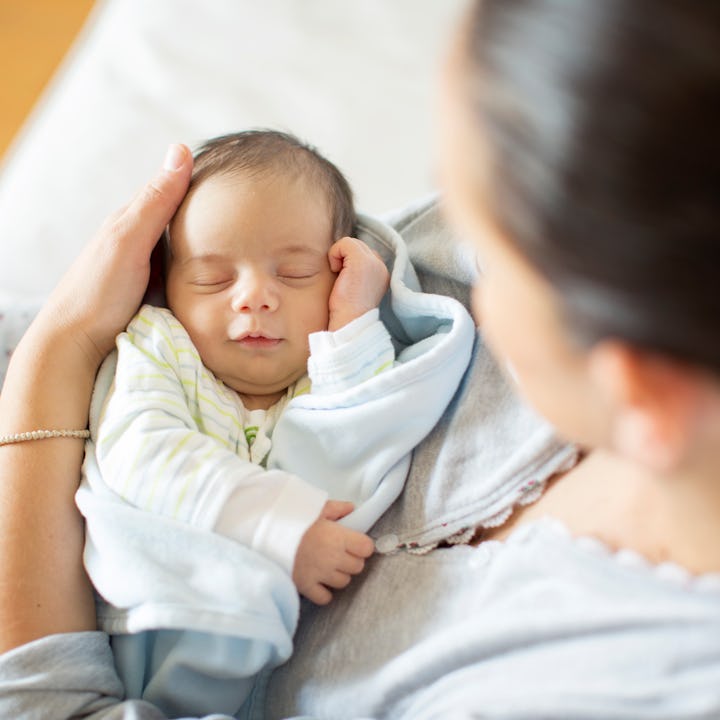The Birth Rate Rose For The First Time In 7 Years
The 1% increase could mean he downward trend of births from the pandemic is coming to an end.

According to a new study released by the CDC, in 2021, the U.S. birth rate has increased for the first time in seven years.
Preliminary data from the CDC’s National Center for Health Statistics found there were 3,659,289 babies born in the U.S. in 2021, a 1% increase from 2020’s 3,613,647 births. Last year’s numbers also mark the first rise in births since 2014. From 2014 to 2020, births declined roughly 2% each year.
While the report did not speculate or determine why the number of births increased, data collected in various polls by Pew Research Center suggest that many Americans put off plans of having a baby — or decided to forego parenthood altogether — during the first year of the pandemic due to financial strain and public health concerns.
"When it comes to changes in fertility behavior, we're limited," Dr. Brady Hamilton, from the NCHS Division of Vital Statistics and lead author of the report, said to ABC News. "That's where you need a survey about what's behind the decision-making process."
One interesting difference in birth rates the study did note, however, was that birth rates among those 25 and older increased from 2020 to 2021, while it decreased for those 24 and younger. Teenage births between the ages of 15 and 19 dropped 6% to 14.4 per 1,000, which is a record low.
"That sort of suggests [that] when we saw the decline in births from 2019 to 2020, probably a lot of births were postponed," Hamilton told ABC News.
"People were waiting to see what happened [with the pandemic] and rates rose in older women as they may have proceeded to have that child."
The report also showed an increase in the fertility rate, aka the number of live births per 1,000 pregnancies — in women between the ages of 15 and 44. This number went up to 56.6 in 2021 from 56 in 2020, and is the first increase since 2014, according to the report.
The total fertility rate (TFR), which is an estimated number of births a group of 1,000 people would cumulatively have throughout their lifetimes, is a different story. For 2021, the TFR was 1,663.5 births per 1,000 women.
This number is considered low to experts concerned about the replacement level, or the level a population needs to replace itself, which is 2,100 births per 1,000 women.
The preterm birth rate also rose 4% in 2021, from 10.09% to 10.48% — the highest reported rate since 2007. Preterm births — when a baby is born before 37 weeks of pregnancy have been completed — are at a higher risk of lifelong conditions like developmental delays, vision and hearing problems, and breathing and feeding difficulties.
The authors of the report are unsure of the cause of the rise in preterm birth rates, and chances are it is a host of complicated, intertwined factors, like the pandemic, racial disparity in medical care, and the fact that more and more women are putting off starting a family until they are well into their 30s or 40s.